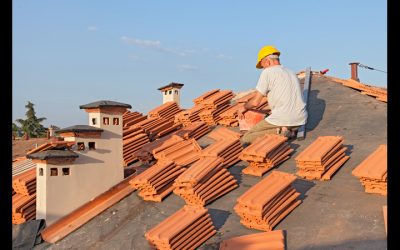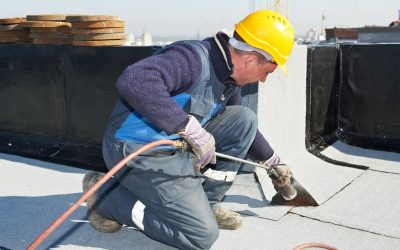Flashing may seem like a small part of your roof, but it plays a huge role in keeping your home safe from water damage. Whether you’re dealing with step flashing, chimney flashing, or valley flashing, these thin strips of metal are essential for protecting your home. Knowing when to replace flashing on a residential roof is something every homeowner should understand—especially if you live in a place like Tucson, AZ where the sun and storms can be brutal on roofing materials.
Flashing helps direct water away from critical areas like roof edges, chimneys, skylights, and valleys. If flashing is damaged, missing, or old, it can lead to serious roof leaks and costly repairs. So when is it time to call a residential roofing contractor? Let’s break it down with expert tips and maintenance advice.
Why Roof Flashing Matters More Than You Think
Roof flashing is designed to prevent water from getting into places it shouldn’t. It’s usually made of metal and installed where different parts of the roof meet or where the roof connects to things like chimneys or vents. These are some of the most vulnerable spots on your entire roofing system.
Without proper flashing, rainwater or even melting snow can seep into the cracks and cause rot, mold, or even structural issues. In Tucson, the intense sun followed by sudden monsoon rains creates the perfect storm for roof damage. That’s why regular roof inspections and residential roof maintenance flashing tips are so important for homeowners in the area.
Signs It’s Time to Replace Your Roof Flashing
One of the biggest signs you need to replace your flashing is a roof leak. If you see water spots on your ceiling or walls, that could be a sign the flashing around your chimney, skylight, or roof valley is failing. You might also notice rusted or bent metal flashing sticking up from the roof surface, which means it’s no longer doing its job.
Weather damage is another red flag. Tucson’s high winds and intense UV rays can wear down even high-quality roofing materials over time. If your flashing is lifting, cracking, or peeling away from the roof, it’s a good idea to have a roofing contractor take a look. A simple repair could prevent a much bigger problem later.
Different Types of Roof Flashing and Their Lifespan
Not all flashing is the same, and each type has its own lifespan depending on material, placement, and exposure. Step flashing is used along the sides of walls or dormers and needs to be perfectly layered with shingles. Chimney flashing wraps around the base of chimneys and should form a waterproof seal. Valley flashing is found where two roof slopes meet and is especially prone to debris buildup and damage.
Most metal flashing—like aluminum or galvanized steel—can last 20 years or more, but only if it’s properly installed and maintained. That said, flashing often gets overlooked during roof inspections unless the contractor knows to check it. That’s why it’s so important to work with a residential roofing contractor near me who understands Tucson’s unique climate and roofing needs.
The Role of Metal Flashing in Roofing Systems
Metal flashing offers both durability and protection. Unlike sealants or roofing tape, which can degrade quickly under the hot Arizona sun, metal flashing stands up to high temperatures and sudden downpours. It also helps your overall roofing system last longer by sealing out moisture at the weakest points.
However, once flashing starts to corrode or pull away, even the best roofing materials can’t save your home from leaks. That’s why knowing when to replace flashing on a residential roof is key to long-term home protection.
The Best Time to Replace Roof Flashing
In many cases, flashing should be replaced anytime a new roof is installed. Unfortunately, some contractors cut corners by leaving old flashing in place during a roof replacement. This is a mistake. Old flashing can fail before the new roof does, leading to leaks and damage.
Even if you’re not replacing the whole roof, flashing may still need to be updated if it’s visibly damaged or showing signs of rust. It’s also a smart idea to replace flashing after major storms or during scheduled roof maintenance. Tucson homeowners should aim for a roof inspection at least once a year, ideally before the summer heat and monsoon season hit.
During Roofing Maintenance or Repairs
When a roofing contractor is already on your roof for repairs, it’s a great time to check all the flashing. Loose or cracked flashing can often be replaced quickly, especially when caught early. Don’t wait until there’s a serious leak. Proactive replacement can save time, money, and headaches down the road.
Working with a Trusted Residential Roofing Contractor in Tucson
Choosing the right contractor makes all the difference. Look for someone experienced in residential roofing and flashing repair, particularly in the Tucson area. Local contractors understand the unique weather patterns and the wear they put on roofing materials.
Ask if they include flashing inspections as part of routine roof maintenance. Not all companies do. You’ll want a contractor who checks chimney flashing, step flashing, and valley flashing, especially if your roof is more than 10 years old. The right contractor will also walk you through your options for repairs or replacements and explain what’s best for your home.
Conclusion
Roof flashing may be easy to overlook, but it’s one of the most important parts of your roofing system. Whether it’s protecting your chimney, roof valleys, or edges, flashing keeps water out and your home dry. If you’ve noticed any signs of damage—or if your roof is getting older—it’s time to reach out to a professional for a proper roof inspection.
Don’t wait for a leak to tell you there’s a problem. Stay ahead of the damage with regular maintenance and experienced help. If you’re in Tucson, the best move is to call a Residential Roofing Contractor in Tucson, AZ who can assess your flashing and recommend the right repairs or replacements. Your roof—and your home—will thank you.


